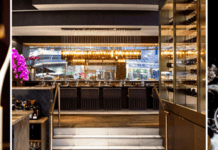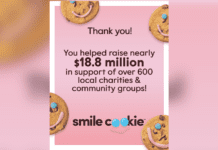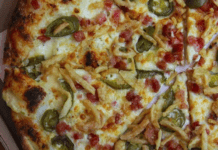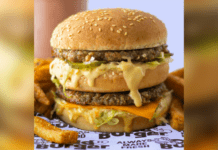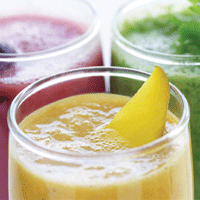Everyone is jumping on the smoothie train, but when it comes to serving these trendy fruit blends, QSR restaurants reign supreme, offering 75 per cent of all smoothie servings in the market, according to NPD Group research. These better-for-you blends are hotter than ever, with servings doubling in growth, compared to two years ago; and the cool beverages are gaining an assortment of fans, from children to mature adults.
Powdered, syrup-based blends are passé; and QSRs are now offering a variety of real-fruit concoctions to appeal to the customer’s palate. When it comes to choosing flavours, smoothie buyers are looking for a sense of adventure, says Anne Parks, director of Menu Management for McDonald’s, which launched its McCafé Real Fruit Smoothies in March 2012. “Canadians are one of the biggest consumers of fruit and fruit juice in the world, and they are very adventurous in terms of what fruit they like, so it allows us to meet that need,” says Parks, of its current roster that includes Mango-Pineapple, Strawberry-Banana and Blueberry-Pomegranate flavours. “Ten years ago pomegranate wasn’t mainstream, but it is today,” says Parks, adding superfruits such as açai and gogi berry are also gaining popularity. But, despite budding interest in flavours such as pomegranate, pineapple and mango, most operators agree, strawberry-banana is the most popular flavour of the day.
But, creating a popular smoothie isn’t just about choosing the best flavour. The rise of an increasingly health-conscious consumer is leading restaurant operators to tout nutritional benefits and organic ingredients, too. “People are looking for cleaner ingredients,” says Pat Cornacchia, director of Culinary at Williams Fresh Café, which offers smoothies made with fresh or frozen fruit. “We’re using honey, versus sugar; we’re using agave, coconut water and organic yogurt. That was our point of difference,” he says. “Unlike everyone else, and, I’m not going to mention names, they are using high-sugar syrups to make their smoothies, and we chose to go the other route where we are using all-natural-as-possible ingredients.”
Other chains are using Canada’s Food Guide to market themselves as a healthy snack choice. “Every smoothie is made with a full serving of fruit in every cup, offering quality and value,” says Dave McKay, VP Marketing, Beverages, Tim Hortons.
But, with many new smoothies introduced in the past few years, operators are looking for new ways to attract customers, offering $1-limited-time promotions, or handing out samples from food trucks in select markets. In the U.S., Burger King launched a national advertising campaign that shows celebrities such as David Beckham ordering the chain’s new strawberry-banana fruit smoothie.
Across the board, no matter what the occasion, the smoothie offers versatility, which appeals to a number of age groups and people who are motivated by different reasons to purchase smoothies. McDonald’s Parks sums it up: “A beverage can be an indulgent treat, it can be a snack in the afternoon, a quick pick me up — it could also be a meal. It’s about having a product that meets all those different needs at all those different times.”
Keep Reading
Tapping Into the Value Of Old World Wines
Cooking by Numbers: Labour-Saving Equipment

